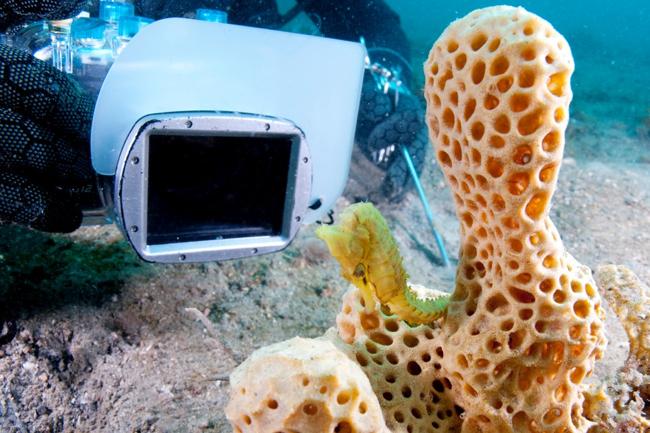
If you’ve been concerned about what the effects of underwater flash photography might have on seahorses, you can put your worries aside: flash photography poses no harm to the tiny underwater creatures, research shows. It may sound like a joke or we’re poking fun, but in reality the study is important in determining how flash photography – which scientists can use for tagging purposes – may or may not affect the behavior of animals being studied.

Research conducted by the University of Technology, Sydney (UTS) found that flash photography-based tagging has no long-term effects on seahorses. Scientists have found underwater photography to be an effective, non-invasive alternative to catching individual seahorses, which have unique markings that identify them. For more than a year researchers studied the effects on White’s Seahorse, or Hippocampus whitei. They found that the seahorses did exhibit short-term behavioral changes if they are handled, so flash photography was a safer option.
“Some seahorses have spots and blotches that are easily identified, especially when flash photography is used, but there haven’t been any studies to determine the impact this might have on seahorse behaviour and movements” UTS marine scientist David Harasti, the lead author of the study that addresses the topic, told Phys.org.
The reason for the concern has to do with the eye structure of seahorses. Because of the cloudy underwater conditions they live in, they need good eyesight. Scientists weren’t sure if the use of a flash could negatively impact their eyesight. The U.K. Marine Management Organisation banned flash photography of seahorses in 2011 as a precaution.
“We thought this intriguing. Seahorses are iconic species, scuba divers love photographing them and since future data collection may come to rely on using underwater flash photography we felt it important to assess the potential impacts,” Harasti said.
Although more research is needed, Harasti said this is good news because it allows “citizen scientists” to share photos with researchers of this unique underwater inhabitant.
(Via Phys.org; images via David Harasti)


